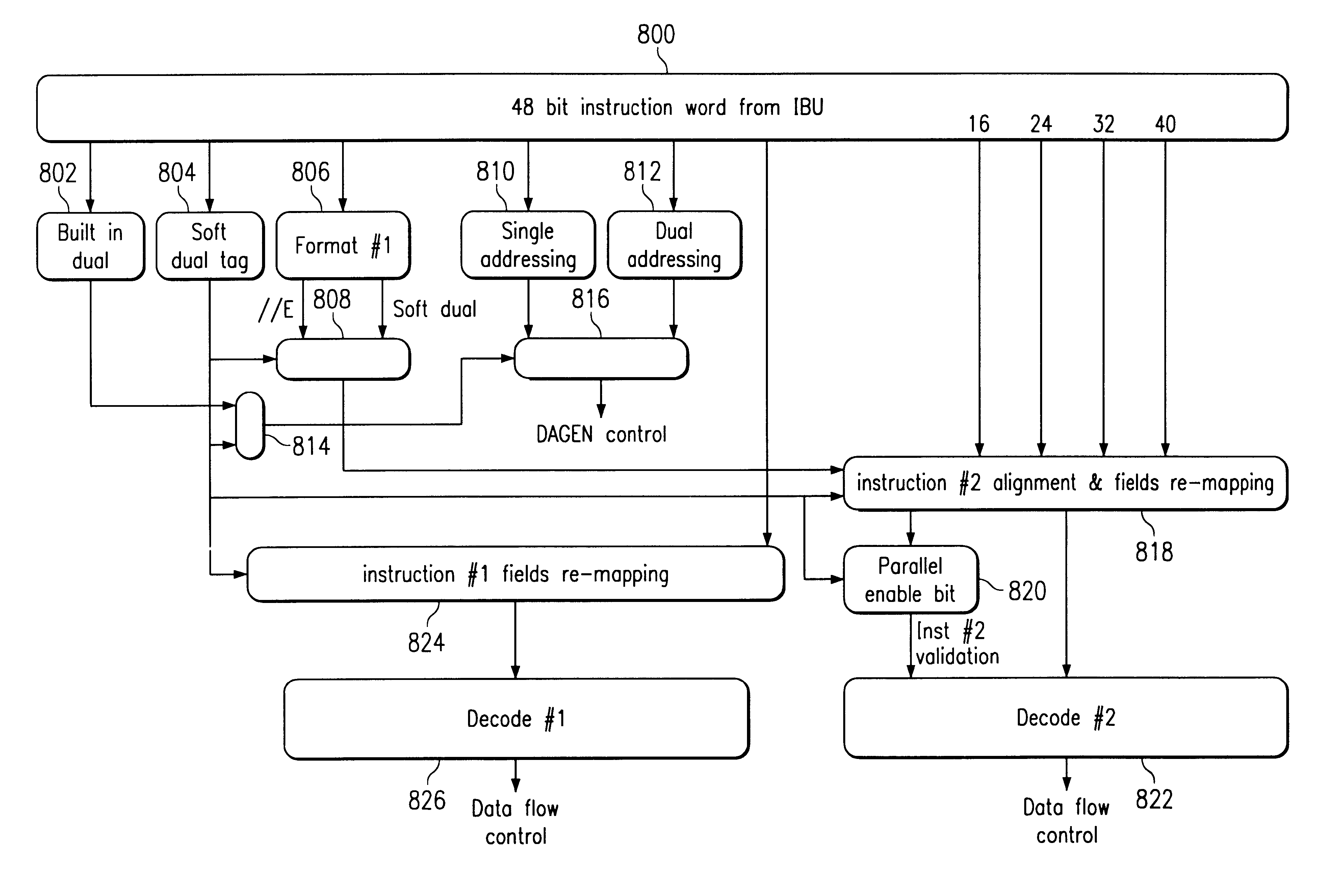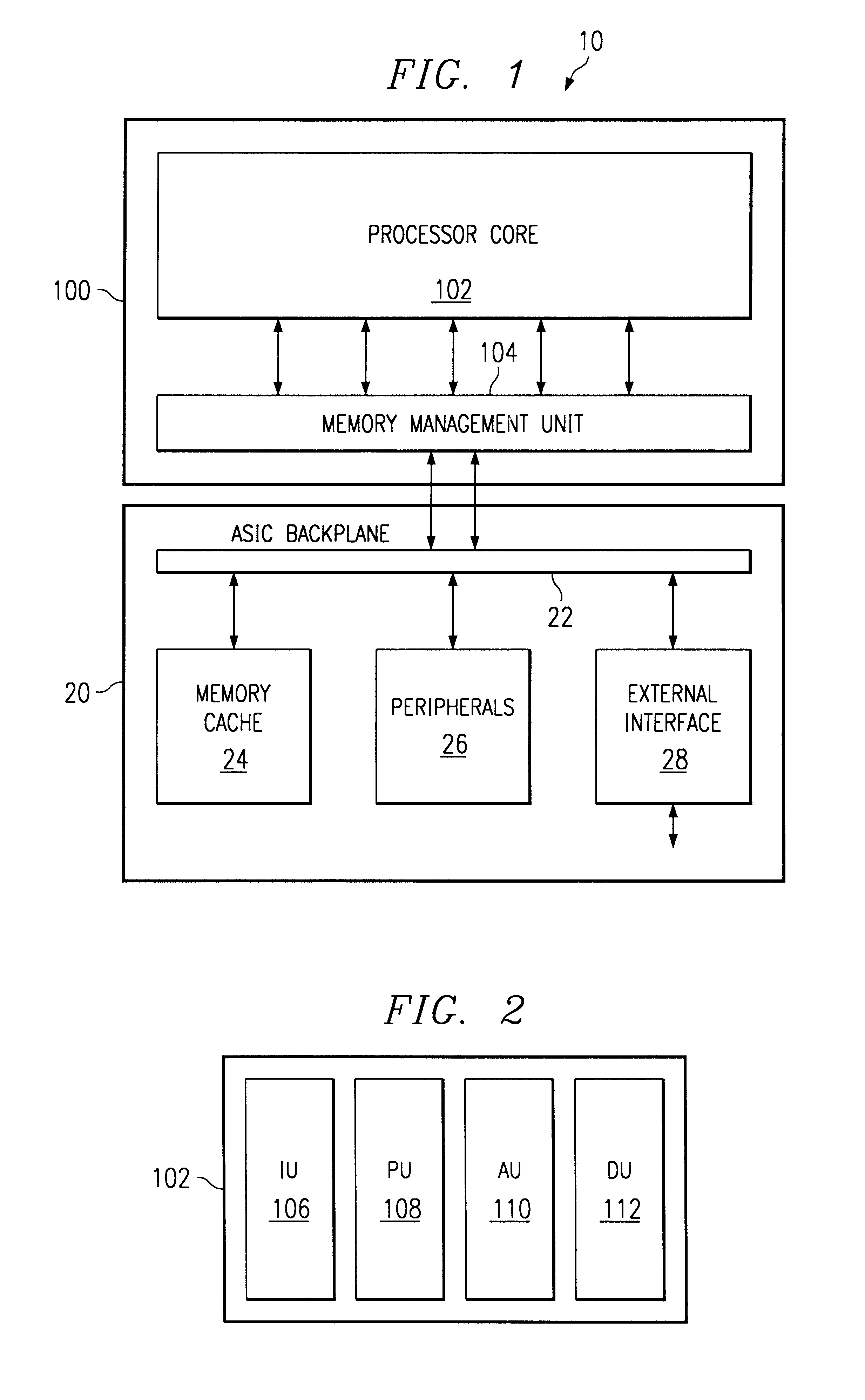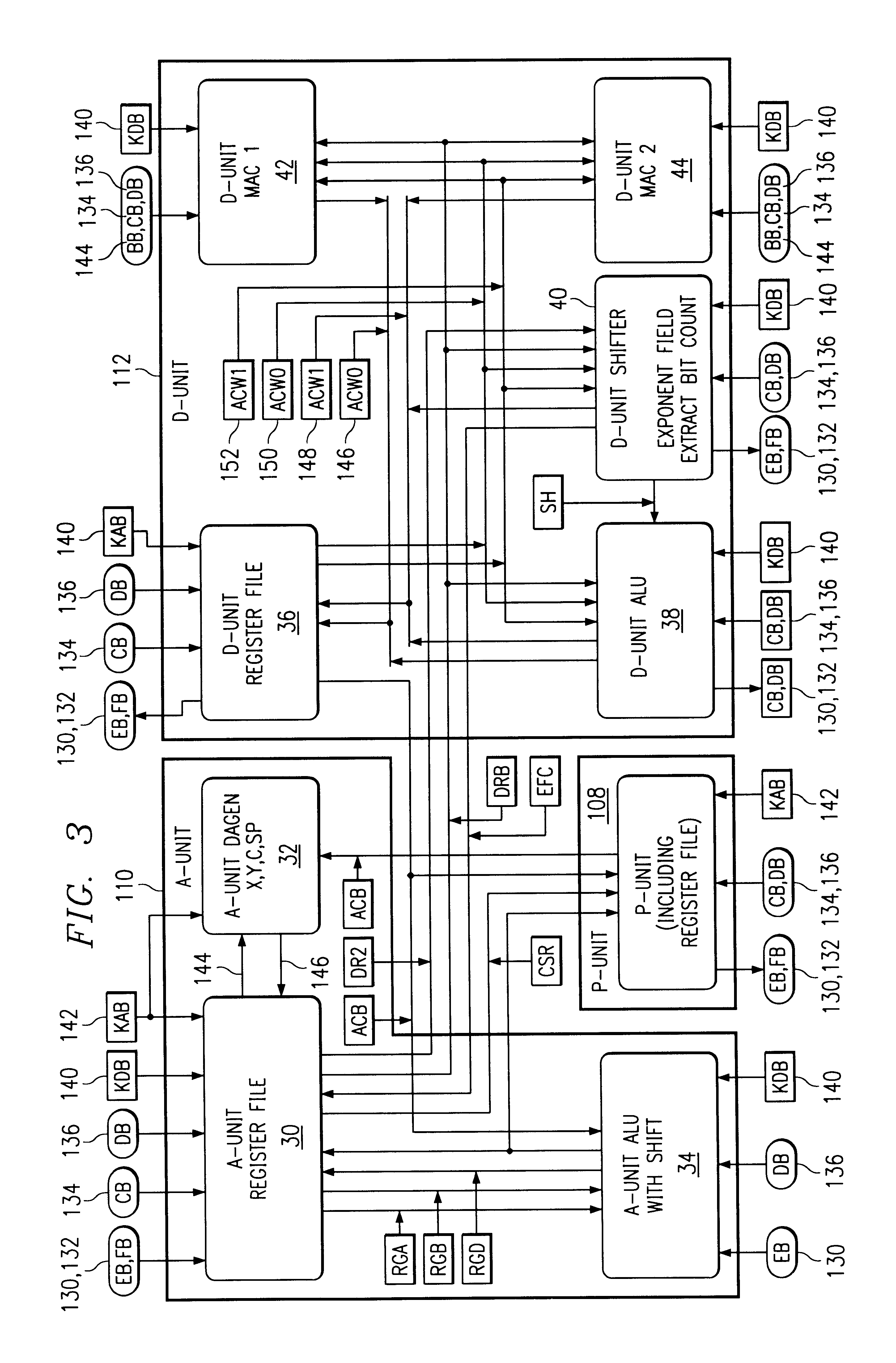Dual access instruction and compound memory access instruction with compatible address fields
a technology of address fields and access instruction, applied in the direction of instruments, register arrangements, and processing data according to predetermined rules, can solve the problems of complex operating systems that have been necessary, and achieve the effect of reducing the number of bits required, reducing the number of options, and positive effect on instruction throughpu
- Summary
- Abstract
- Description
- Claims
- Application Information
AI Technical Summary
Benefits of technology
Problems solved by technology
Method used
Image
Examples
Embodiment Construction
Although the invention finds particular application to Digital Signal Processors (DSPs), implemented for example in an Application Specific Integrated Circuit (ASIC), it also finds application to other forms of processing engines.
FIG. 1 is a block diagram of a microprocessor 10 which has an embodiment of the present invention. Microprocessor 10 is a digital signal processor ("DSP"). In the interest of clarity, FIG. 1 only shows those portions of microprocessor 10 that are relevant to an understanding of an embodiment of the present invention. Details of general construction for DSPs are well known, and may be found readily elsewhere. For example, U.S. Pat. No. 5,072,418 issued to Frederick Boutaud, et al, describes a DSP in detail and is incorporated herein by reference. U.S. Pat. No. 5,329,471 issued to Gary Swoboda, et al, describes in detail how to test and emulate a DSP and is incorporated herein by reference. Details of portions of microprocessor 10 relevant to an embodiment of...
PUM
 Login to View More
Login to View More Abstract
Description
Claims
Application Information
 Login to View More
Login to View More - R&D
- Intellectual Property
- Life Sciences
- Materials
- Tech Scout
- Unparalleled Data Quality
- Higher Quality Content
- 60% Fewer Hallucinations
Browse by: Latest US Patents, China's latest patents, Technical Efficacy Thesaurus, Application Domain, Technology Topic, Popular Technical Reports.
© 2025 PatSnap. All rights reserved.Legal|Privacy policy|Modern Slavery Act Transparency Statement|Sitemap|About US| Contact US: help@patsnap.com



